What is CAE?
Maybe you have already heard those three letters « CAE »
… and you are wondering what it means
Here’s a quick video that explains the concept behind CAE:
This is what I will explain right now
What is CAE: a simple introduction to « Computer Assisted Engineering »
let’s say you are product designer and you are wondering how to make the best design for your products but…
What is a great design?
Something that will catch the eye of your clients?
…not really
Materials, quality and resistance of your product are all very important
This is why you will have to perform series of standard tests on your product to validate the design
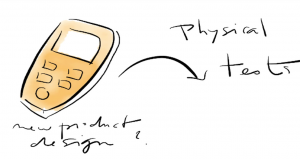
For each different product you have different types of tests that will help you to determine if your design will fail or not.
So, if we suppose that you are an “electronic device designer” for example
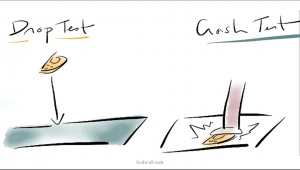
One of the tests you will have to do is called the drop test
In other words, throw your product on the ground to see if it breaks or not…
Then you have also the crash test and various destructive test
then all is is not about stress, you have also to do thermal cooling tests for example
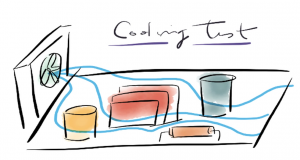
Basically it’s to see if your device will not overheat during its life
This is a required test for electronic devices because they are always consuming power and heating
Do you remember the last time you turn off your cell phone?
If not… you probably understand how much heat management is important to keep electronic devices functioning.
How CAE assists to reduce the cost of prototyping
To simplify I just considered those three tests but you have to know that to get the quality we have in actual products much more tests are required so when you do the drop, the crash test and the cooling test, you will already have spent a fair amount of money…

But you have to understand that this is only the first prototype…
So when the physical test of all the prototypes all over you will have spent a lot of money just to be sure it won’t fail under certain design scenarios
After following all this process you may ask yourself this question:
« How can I limit the cost of all those physical tests? »
That’s where a CAE software comes handy to simulate your part or system on a computer rather than to do all the physical testing every time.
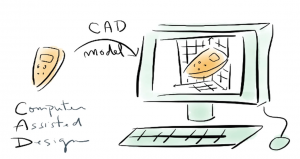
CAE Software versus CAD Software, what is the difference?
The first step to do that is to create a 3-D model of your product using a CAD software
« CAD » stands for computer assisted design… but this is only the first step!
When you have your 3-D model in CAD, you cannot directly test, you have to use another CAE Software
What you need to remember is that CAD is for graphical design, whereas CAE is for real engineering
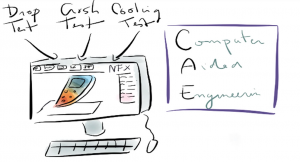
It is true that sometimes you have some testing module embedded in your CAD Software, but most of the time those are quite limited and the results you get are not that accurate.
This is why professionals use a separate Software to do the job
So as you see, CAE stands for « computer aided engineering »
It is a way to solve all kinds of engineering problems of your products using a computer
This kind of software is also known as a FEA analysis software because it uses the Finite Element Analysis Method to solve engineering problems
You can directly perform all these tests of drop test, crash tests and cooling test in a CAE software and you don’t need to spend money on so much physical tests
So, in your design process, all the prototypes can be tested directly in your computer
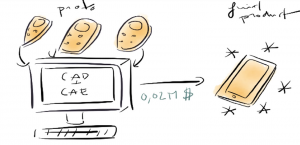
The result is that you gain some significant amount of money and you get your final product as well :-)
Next Article To Read:
——
Let me know if it helps you in ANY way, it always makes me happy to know that I am helping engineers to become better and better in FEA simulation.
The world needs REAL engineers, that’s why I am doing all that.
If you like that article, you can also help me by sharing it with your team or with your network on Linkedin, a sincere THANK YOU for helping me to spread good practices of engineering!
I liked your blog very much. In the recent days I was trying to know what is CAE is all about and what are the basic things I need to know.I am an Automotive Engineer, (working on management side) and in the company where I am working I have seen guys meshing around the model in one of the department, so I wanted to know what things are done after and before meshing and why meshing is done.I started searching and got your blog.
I was reading CAE for beginners in your blog as I clicked it, FEA came out. Is it like FEA comes under CAE?
From now I will be looking for more articles from you on CAE and soon I will be joining a course for CAE in my surrounding ie India, Bangalore. I will be asking you more questions from now and I am sure there are many guys like me in India who don’t know these thing’s because in many college’s they wont teach these software, mostly theoretical knowledge is given. I will suggest your blog for the needful.
Thank You !!!
Thank you very much for your comment Anuj (is it?)
I just began this blog a few months ago for engineers like you who are motivated to learn more about CAE engineering. It is a very interesting subject when you know a bit what it is and how to use it !
CAE Analysis is a more “general” name than FEA, because it means Computer assisted analysis. FEA means Finite Element Analysis, which is basically the method used in CAE Analysis. In fact, what are called “finite elements” are the meshes used to perform Analysis on a 3D model.
Sometimes I say CAE and sometimes FEA analysis, so i guess this is a bit confusing…
If you have any question, i will be glad to answer you ! Don’t hesitate to ask:)
Thanks in advance to present my blog to your colleagues and friends !
Hello Cyprien,
I just wanted to say that your initiative is interesting.
One single observation thou: most of the engineers that are working in industry don’t have access to YouTube from work. So, if you want to have more success please consider giving the opportunity to download the video, or uploading in html format.
Best regards,
Florin
Hello Florin ! Long time I didn’t talk with you ;-)
I remember you joined the webinar we organized on midasNFX.com last year, will you come to the one planned next month also ?
I didn’t know that some engineers didn’t have access to Youtube from their work !
I will definitely consider to add a download link of the video in the next posts.
Thanks for the advice !
Hello Cyprien, I am impressed with your memory; I will most certainly attend your presentation.
very good job it’s really interesting what’s in this blog, I hope that u post more blogs becuz it’s simple and planty of interesting information <3
Heyy I am obliged see your way of explaining the importance of CAD and CAE by taking a practical example. I am a research faculty at IIT and i will definitely see your blogs on regular basis. thanks for your helpful initiation
Hi Goel, I am happy it can help you ! Hope to see you regularly on the blog and discuss with you of your CAD/CAE related problems
Hello from Italy, your blog is very interesting.
Ciao!
Dear Cyprien,
your blog is very helpful & it is helpful to improve our FEA/CAE knowledge…….
Thank you Koti!
Hello Sir,
I am Utkarsh Hiwarkar, I always here to read your blogs & Tips of FEA , it’s very interesting & knowledgeable for me. Thank you very much for guiding us with the help of your blogs…
Is there a complete course on FEA as well as CFD analysis preferably in Ansys to binge watch for whole two days?
Dear Cyprien,
Thank you for wonderful article about FEA/CAE.. and interested to know more about Material non linearity and contact non linearity in details, and also interested to know about Torture track analysis in automotive industry…
Thank you.
Torture track analysis? Never heard about that…
Torture track is a specially prepared track with speed breakers of different size and shade, ups and downs, muddy conditions, various slopes, various road types ( like tones, or basically off-road condition).
Or
Load/displacement w.r.t time..
Thanks for the explanation, it’s the first time I hear this kind of analysis! I get that this is probably done as a transient response analysis (linear or nonlinear) and probably implicit as the time interval isn’t necessarily very short like it would be necessary for explicit.